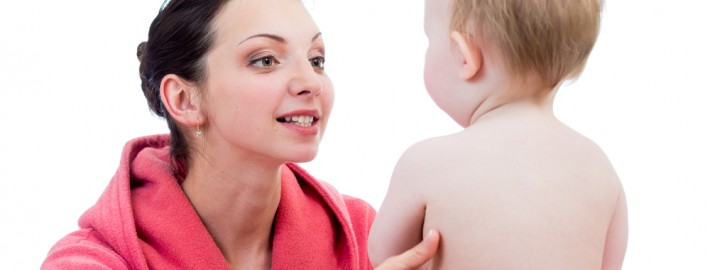Don’t get het up about heat rash
As the summer finally arrives, heat rash becomes a real worry for parents, especially those with small babies who are torn between protecting them from the sun and avoiding wrapping them up so much that they overheat. Babies are particularly vulnerable to heat rash as their sweat glands are not yet fully developed and so will block more easily than the glands of adults.
What is heat rash?
Heat rash, also known as sweat rash or prickly heat, and medically known as miliaria, is a reaction to blockages in the sweat glands on the skin. This usually happens when you sweat too much. Dead skin cells and surface bacteria are drawn into the sweat glands and block the pore, causing sweat to build up under the skin surface. This causes the rash of small bumps or blisters that you get on your back, neck face and legs.
If these small blisters burst, they can become very itchy, hence the name prickly heat. Unfortunately, scratching will only burst more blisters and make the condition worse.
How to avoid heat rash
It may seem obvious, but the best way to avoid heat rash is to avoid getting hot. This means wearing light, loose fitting clothing, taking a cool shower or carrying a fan.
When it comes to looking after little ones, you should dress them how you would like to be dressed yourself in hot weather, with cool, cotton, loose fitting clothing. You should also make sure that their sleeping area is cool and that they don’t have too much bedding on hot nights.
Is heat rash dangerous?
In most cases, heat rash in not dangerous and will clear up by itself in a few days. It can be very uncomfortable, especially for babies, so you should do what you can to keep them cool and sooth their skin. A cool bath or shower is good, especially if you can let them air dry rather than rubbing with a towel, which may irritate the blisters. Calamine lotion and hydrocortisone cream can also be used to soothe a heat rash.
If the rash does not go away in three or four days, or becomes swollen, tender to the touch or infected, you should consult a doctor. Always see a doctor if your child develops a temperature with a heat rash, or if they have swollen lymph glands in their groin, neck or armpits.



